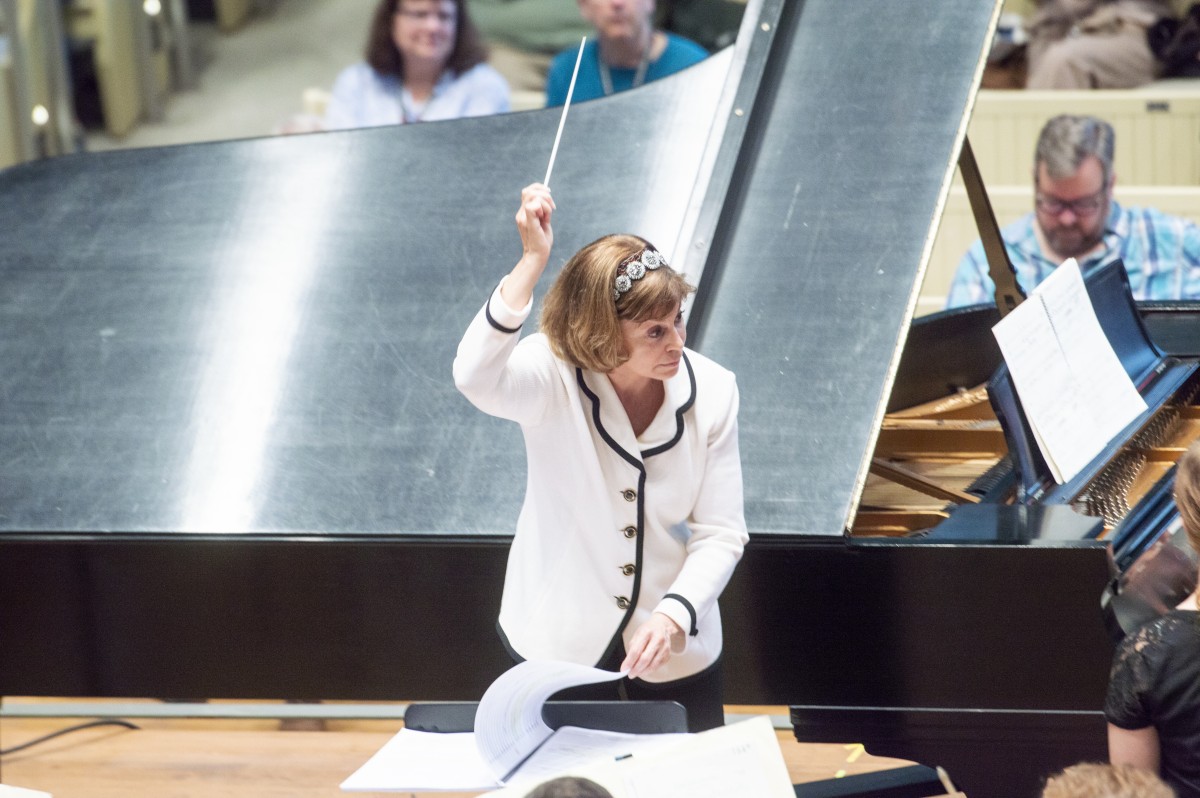Guest Critic: Zachary Lewis
If imitation is the sincerest form of flattery, a slew of people were genuinely honored by the Chautauqua Symphony Orchestra Tuesday night in the Amphitheater.
Not only did the performances reflect well on guest conductor JoAnn Falletta, visiting from the Buffalo Philharmonic Orchestra, the music itself also paid homage to composers of the past, and pianists and orchestra engaged in mutual acts of complementary imitation.
The rarer of the two treats on the year’s fourth “Into the Music” program was “Concerto d’avorio,” a concerto for piano with four hands by former Chautauqua Opera Company composer-in-residence Jeremy Gill. In a venue not often home to new music, Gill’s 20-minute creation Tuesday enjoyed a memorable premiere, courtesy of Falletta and pianists Orion Weiss and Shai Wosner.
Gill is a gifted and smart composer, an artist exceptionally well-versed in music history and adept at writing for orchestra and piano. In “d’avorio,” a co-commission from the Buffalo Philharmonic, Gill ingeniously distills the essence of at least four great composers, all while sounding wholly original and making smooth, compelling use of four hands at one piano.
The echoes of Gill’s sources of inspiration were clear. Across the work’s four movements, echoes of Frédéric Chopin, Béla Bartók, Leonard Bernstein, Franz Liszt and others were readily detectable. Sharp, fitful gestures and restless mechanical music redolent of the 20th century yielded to and emerged seamlessly from silken melodies and virtuoso displays straight out of the 19th.
And what engaging music it was. “This and That,” the first movement, hung on thrilling cascades in every direction, and “Trumpets and Drums,” the second, boasted a jaunty little hummable tune. “The Voice,” meanwhile, conjured the age of Romanticism, and the finale, “The Machines,” saw a frenzy of activity that rose to and went out in a glorious blaze.
Concertos for piano four-hands aren’t exactly common. That Weiss and Wosner performed as a unit and never let slip a hint of strain or stress even as they practically bumped elbows is nothing short of amazing. What’s more, they didn’t just execute a digital feat. They made real, energizing music. No amount of applause could have flattered them enough.
The second offering on the brief, intermission-less program was Modest Mussorgsky’s “Pictures at an Exhibition,” in the transcription by Maurice Ravel. Here, in other words, was a work for piano brilliantly reimagined as a work for orchestra. Talk about imitation and flattery.
Gill’s work, it seems, may have received the larger share of rehearsal time. Even as the performance Tuesday was generally effective and even stirring in places, the music also felt rushed, and moments of tonal insecurity were not scarce.
Still, there was much to savor. The orchestra’s woodwind soloists made haunting work of “The Old Castle,” and the whole ensemble, like the characters depicted in the music, was deftly on its toes in the “Ballet of Chicks in Their Shells.”
Falletta also had no trouble conjuring the “Catacombs” with sweeping gestures and bold contrasts in dynamics, and “The Hut on Fowl’s Legs” as played by the CSO Tuesday was a scene as crazed as they come.
These were no counterfeit “Pictures,” no half-hearted copies. So vivid were these treatments of Mussorgsky, in fact, one might even say they were inimitable.
Zachary Lewis is the classical music and dance critic of The Plain Dealer in Cleveland.









